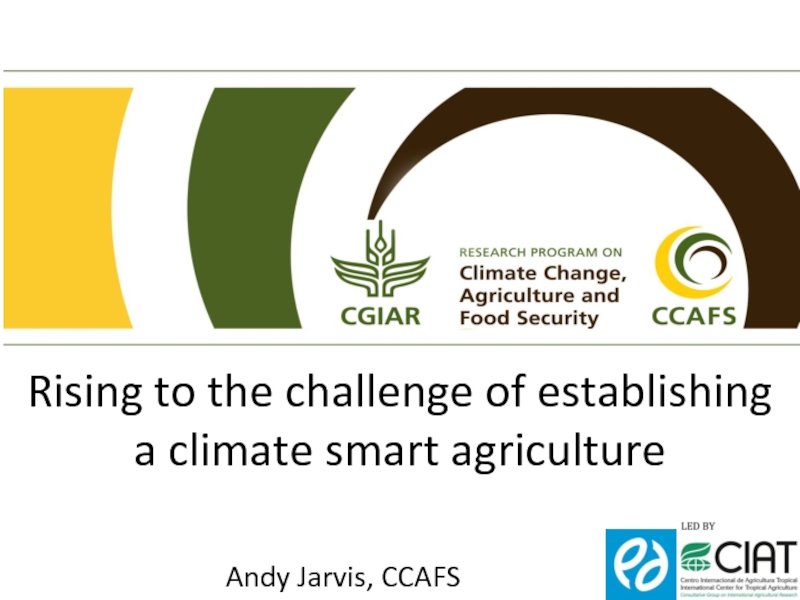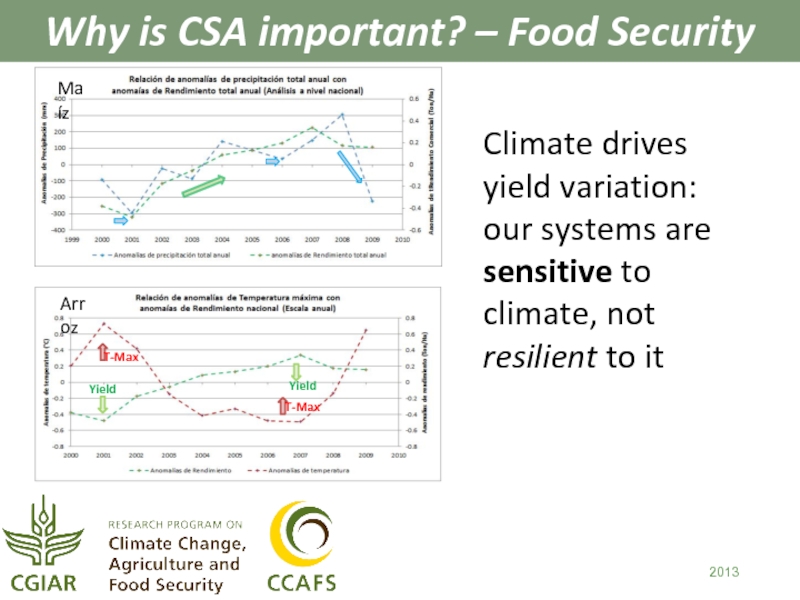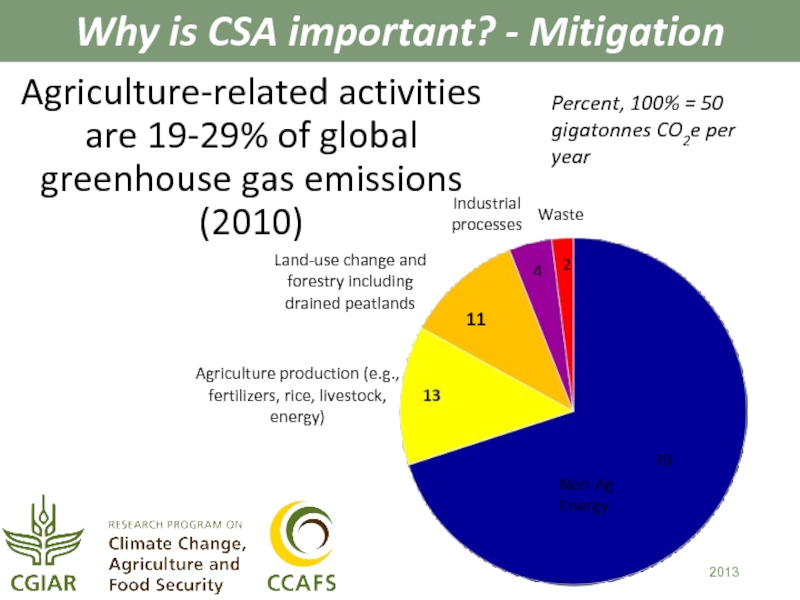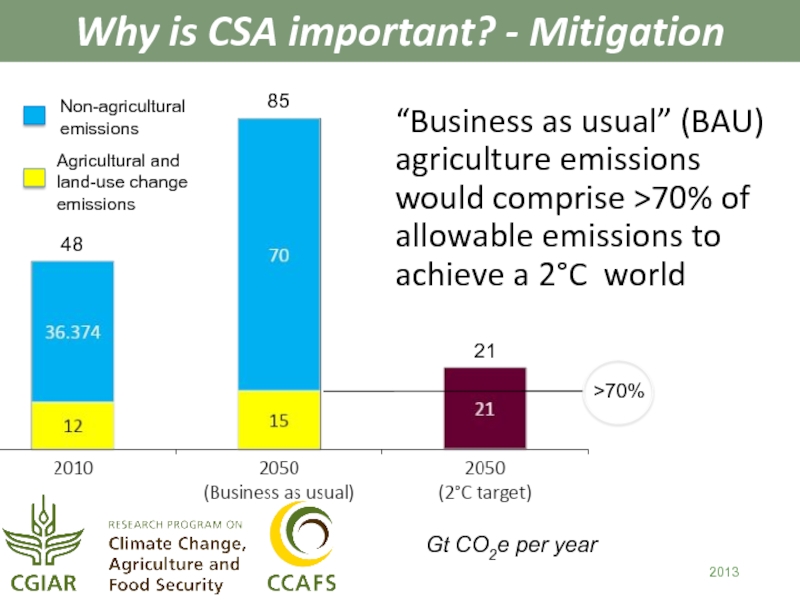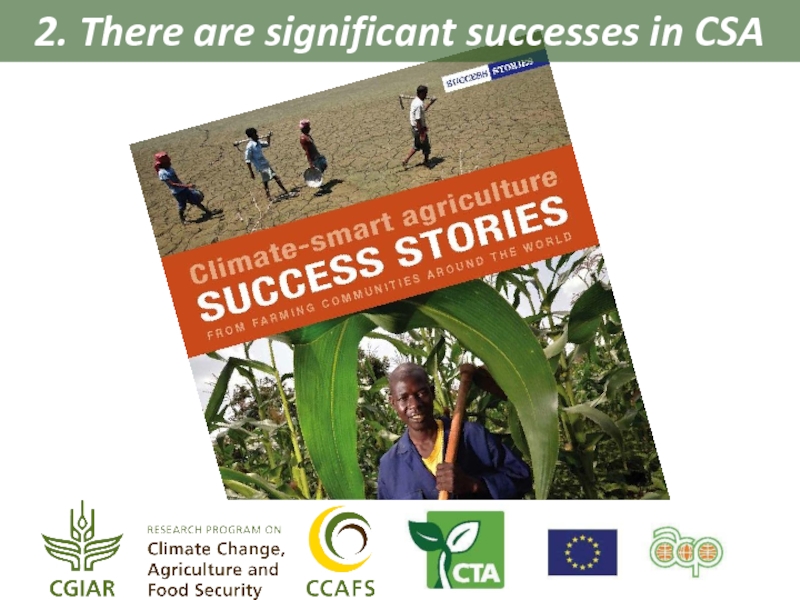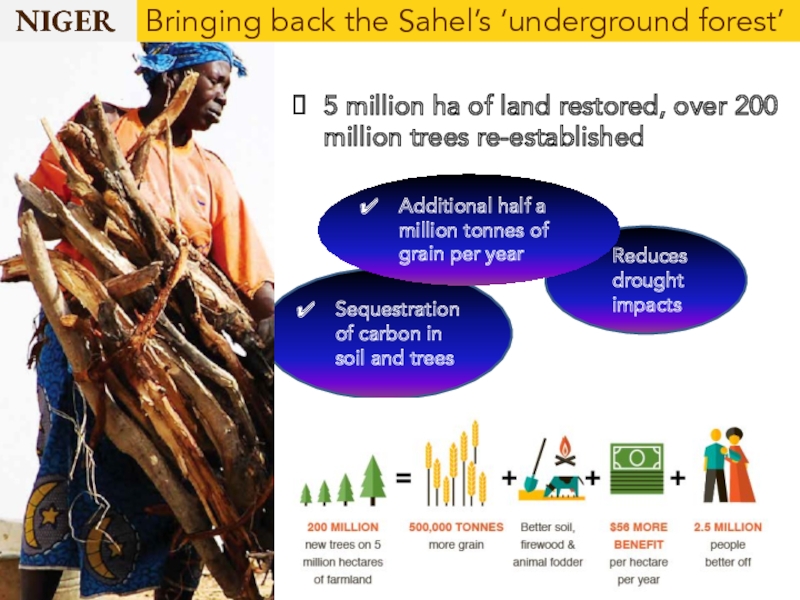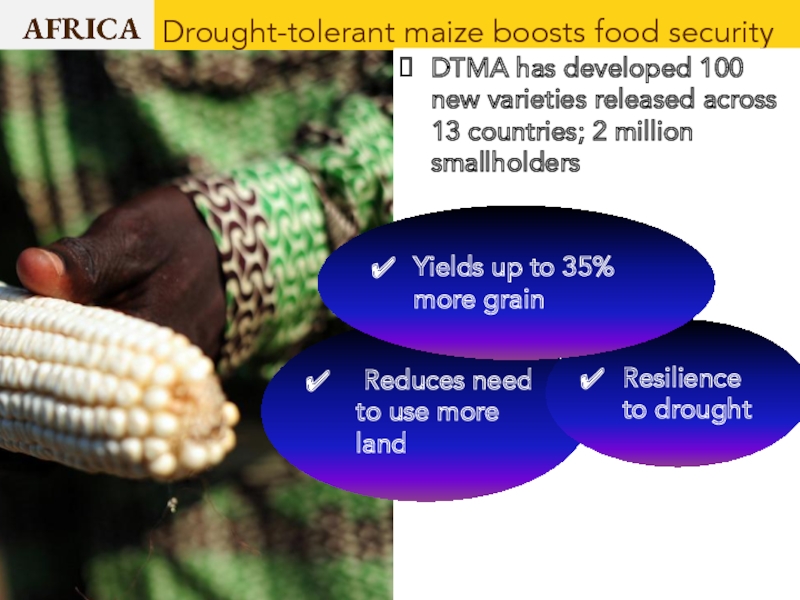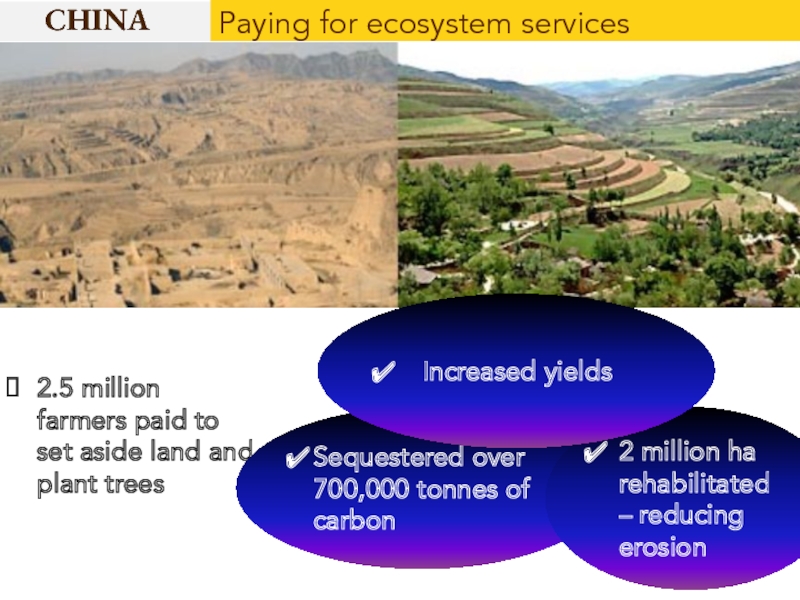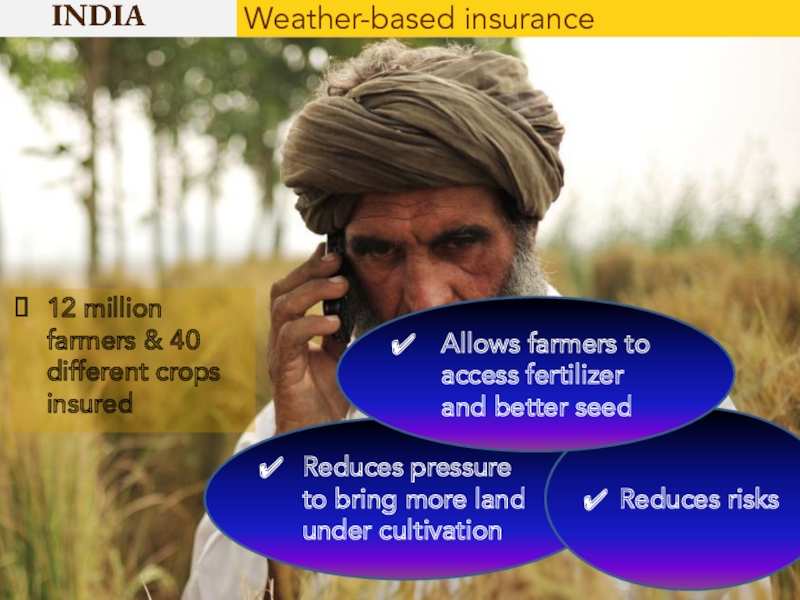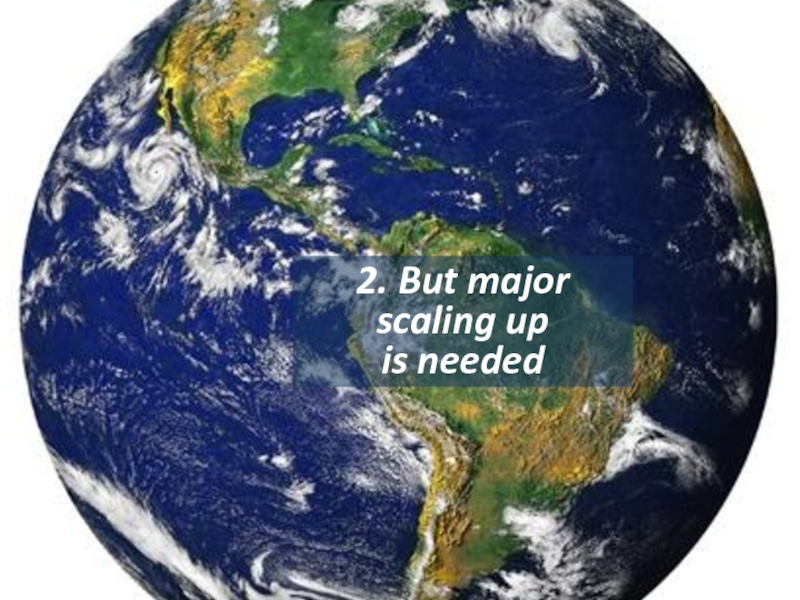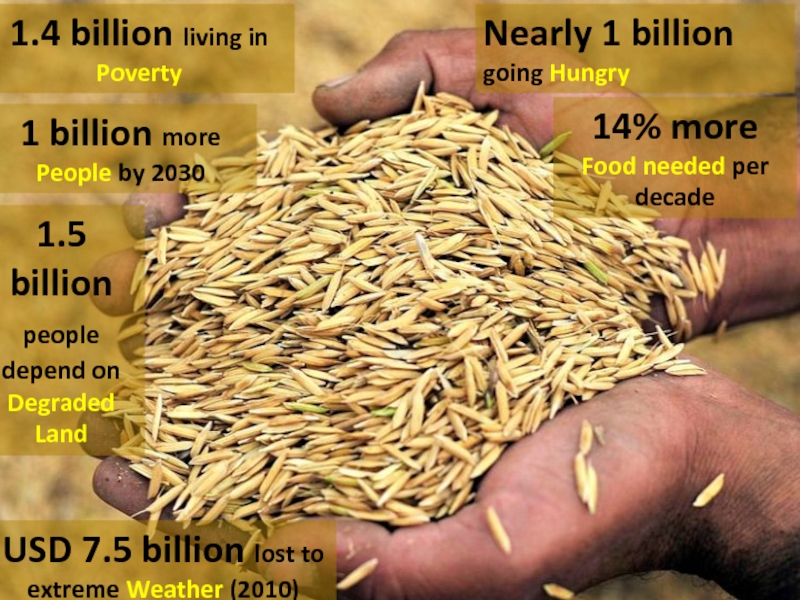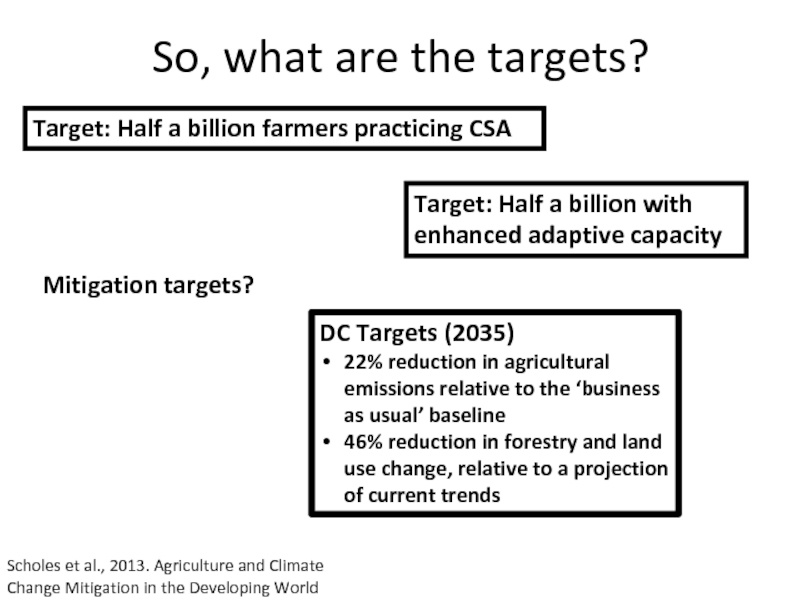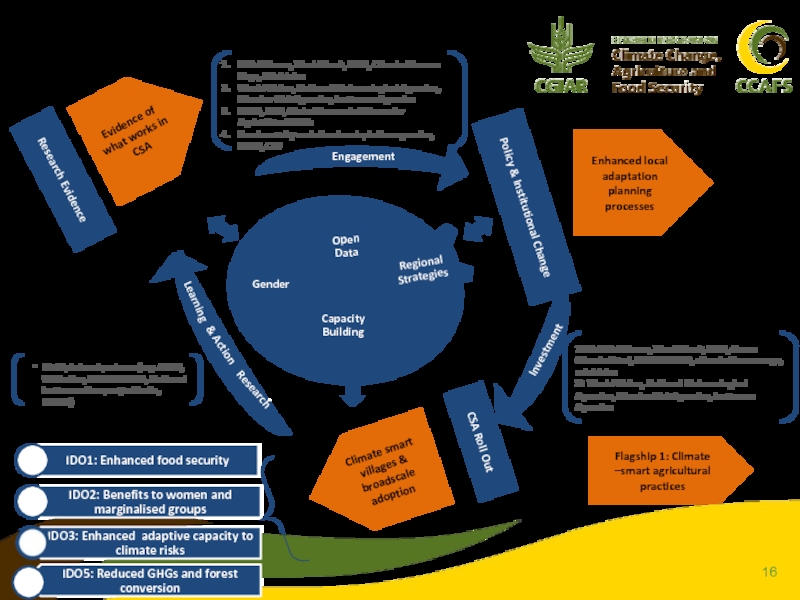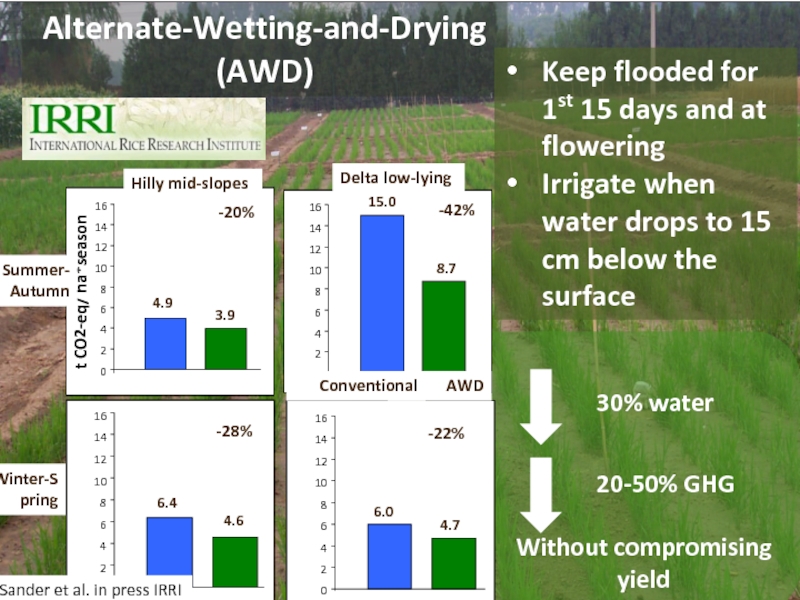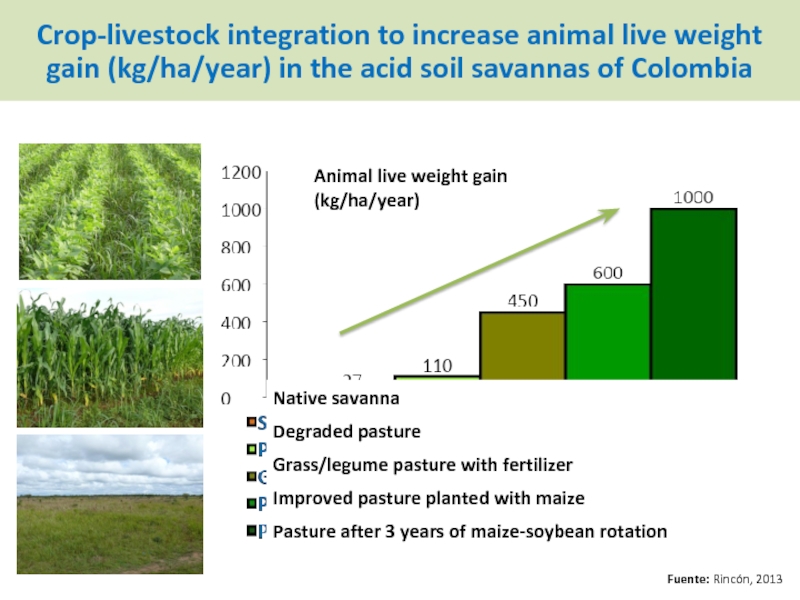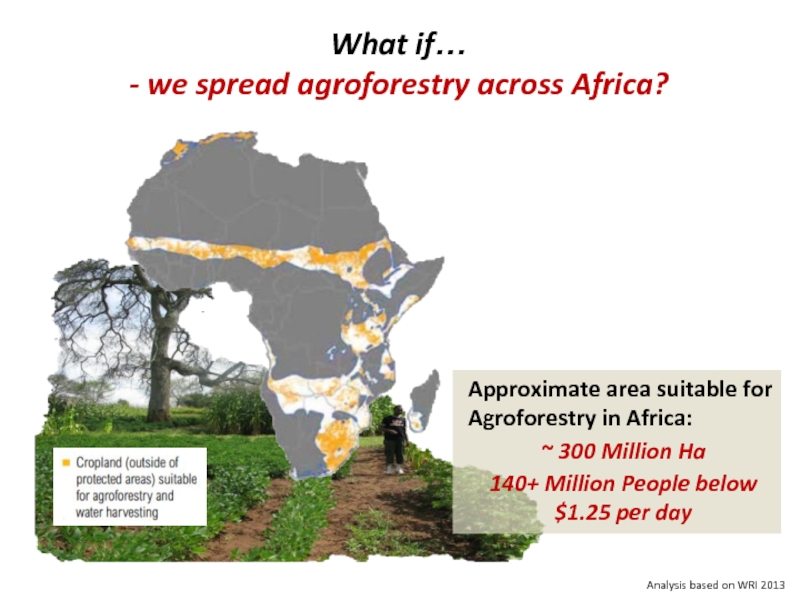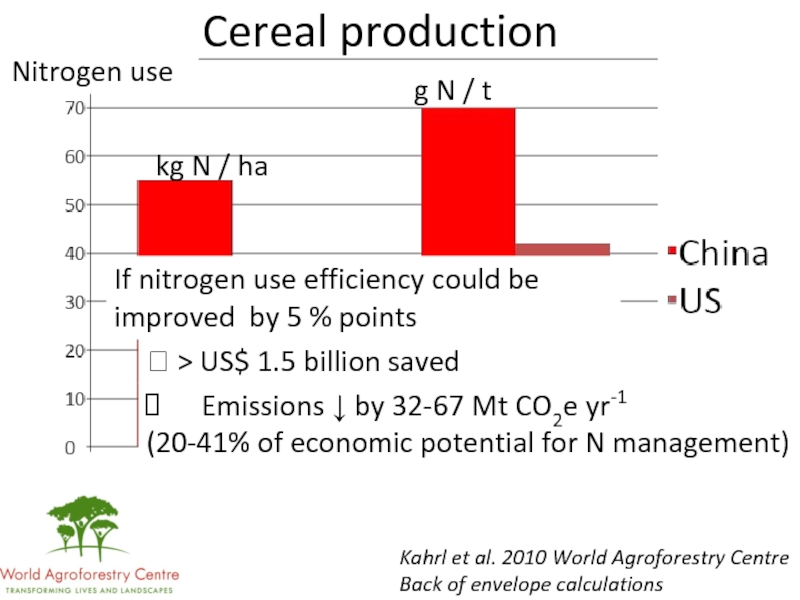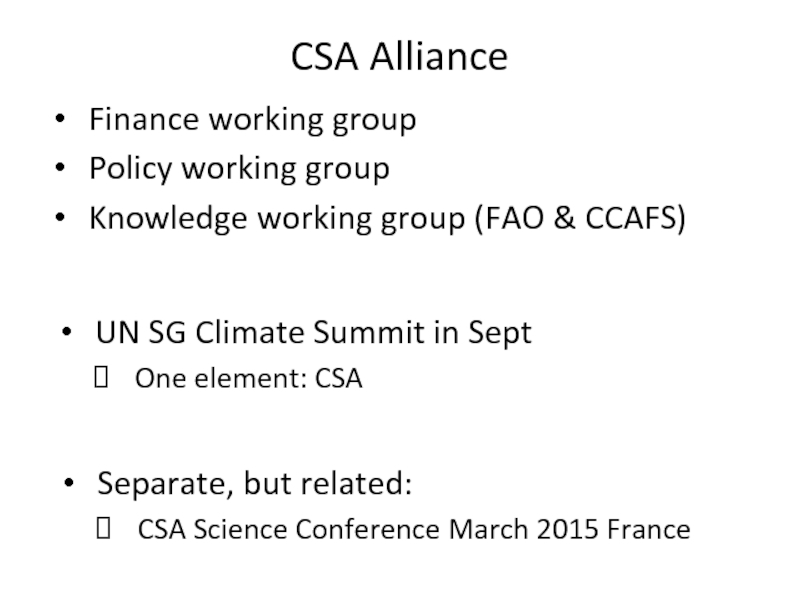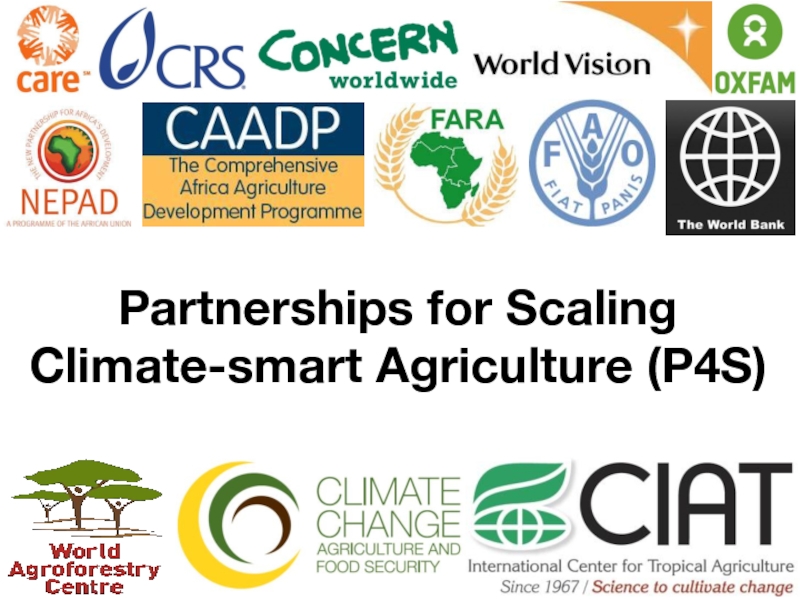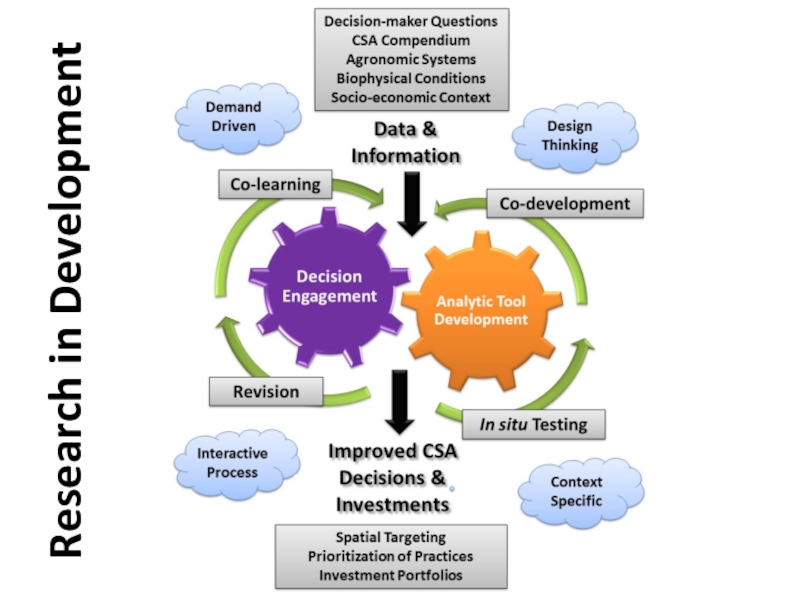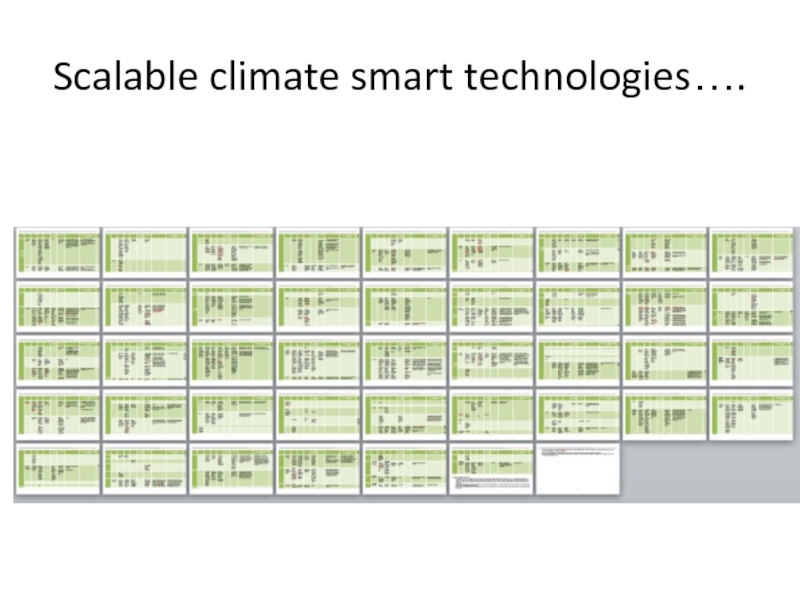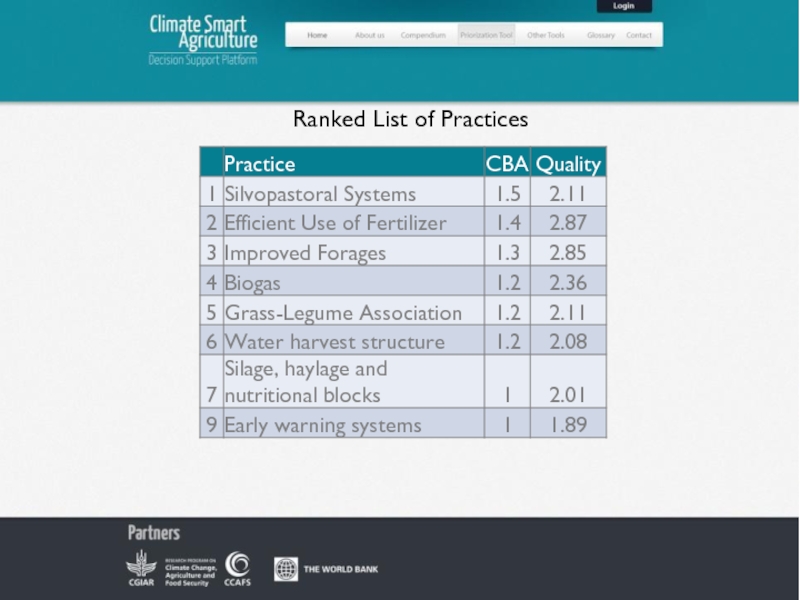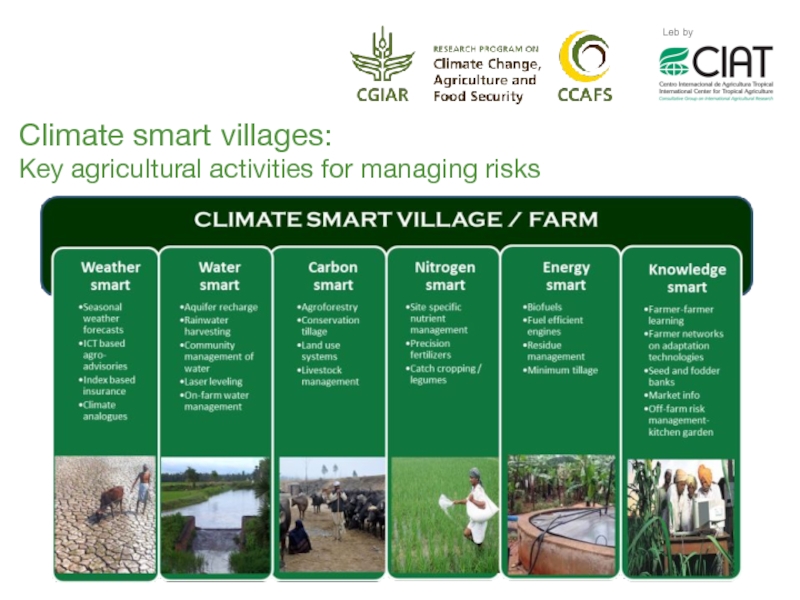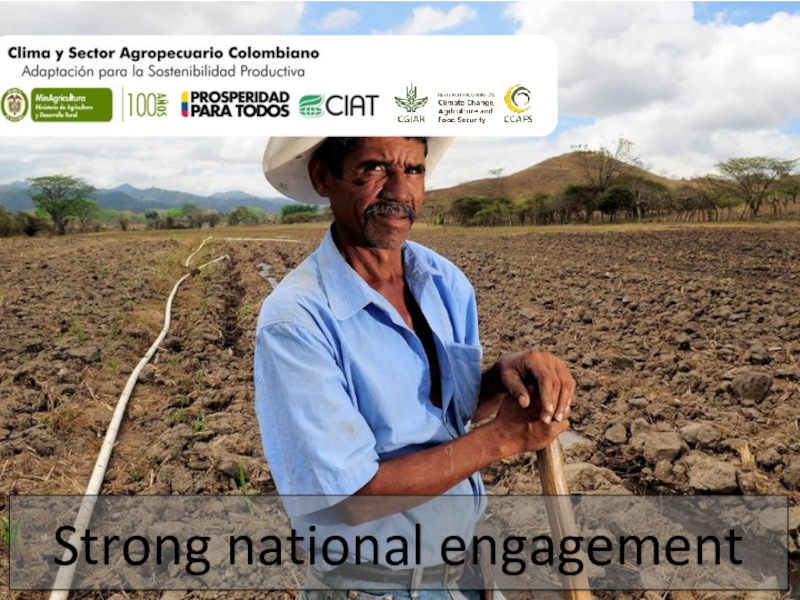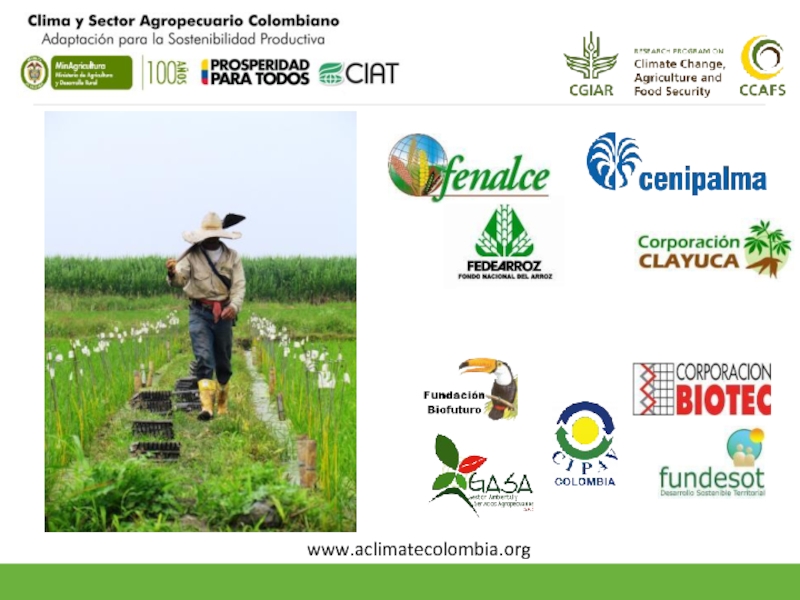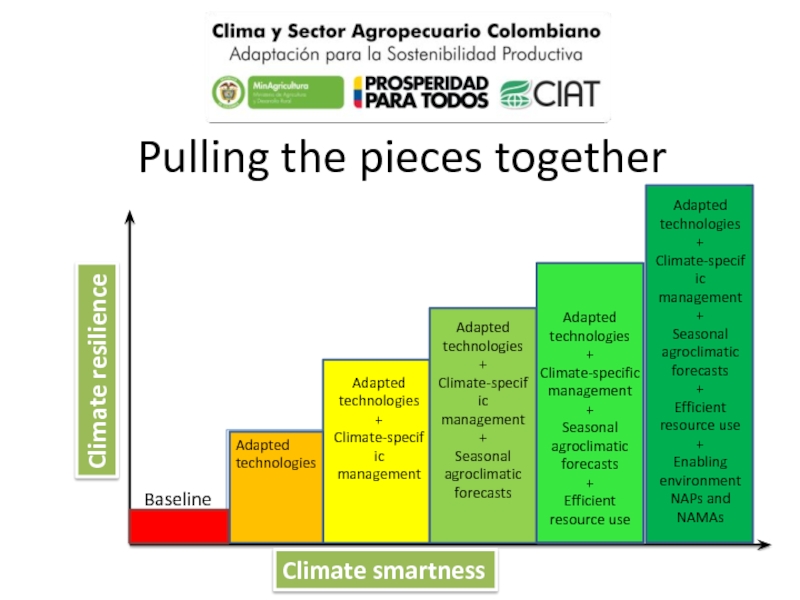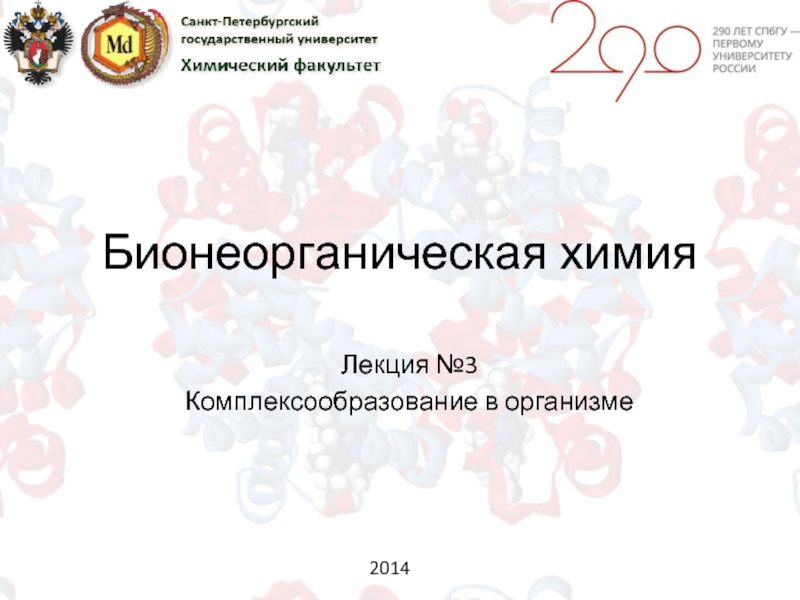- Главная
- Разное
- Дизайн
- Бизнес и предпринимательство
- Аналитика
- Образование
- Развлечения
- Красота и здоровье
- Финансы
- Государство
- Путешествия
- Спорт
- Недвижимость
- Армия
- Графика
- Культурология
- Еда и кулинария
- Лингвистика
- Английский язык
- Астрономия
- Алгебра
- Биология
- География
- Детские презентации
- Информатика
- История
- Литература
- Маркетинг
- Математика
- Медицина
- Менеджмент
- Музыка
- МХК
- Немецкий язык
- ОБЖ
- Обществознание
- Окружающий мир
- Педагогика
- Русский язык
- Технология
- Физика
- Философия
- Химия
- Шаблоны, картинки для презентаций
- Экология
- Экономика
- Юриспруденция
Rising to the challenge of establishing a climate smart agriculture презентация
Содержание
- 2. 2013 What is Climate Smart Agriculture?
- 3. 2013 Why is CSA important? - Adaptation Global wheat and maize yields: response to warming
- 4. 2013 Why is CSA important? – Food
- 5. 2013 Why is CSA important? - Mitigation
- 6. 2013 Why is CSA important? - Mitigation
- 7. 2013 2. There are significant successes in CSA
- 8. Sequestration of carbon in soil and trees
- 9. AFRICA Drought-tolerant maize boosts food security
- 10. CHINA Paying for ecosystem
- 11. 12 million farmers & 40 different crops
- 12. 2. But major scaling up is needed
- 13. 1.5 billion people depend on Degraded Land
- 14. So, what are the targets? Target: Half
- 15. Requires a comprehensive approach Partnerships: research and
- 16. & Action Learning Research Evidence of
- 17. Alternate-Wetting-and-Drying (AWD) 30% water 20-50% GHG
- 18. Coffee-banana intercropping $ ha yr $ ha
- 19. Fuente: Rincón, 2013 Animal live weight gain
- 20. What if… - we spread agroforestry
- 21. What if… - we spread agroforestry
- 22. Cereal production Kahrl et al. 2010 World
- 23. CSA Alliance Finance working group Policy working
- 24. Partnerships for Scaling Climate-smart Agriculture (P4S)
- 25. Research in Development
- 26. CSA Compendium Informs CSA prioritization tool Overcome
- 27. Scalable climate smart technologies….
- 29. Ranked List of Practices
- 30. Leb by Climate smart villages: Key agricultural activities for managing risks
- 31. Strong national engagement
- 32. www.aclimatecolombia.org
- 33. Pulling the pieces together Climate resilience Baseline
- 35. www.ccafs.cgiar.org sign up for science, policy and news e-bulletins Twitter: @cgiarclimate @campbell_cgiar
Слайд 42013
Why is CSA important? – Food Security
Climate drives yield variation: our
Слайд 52013
Why is CSA important? - Mitigation
Agriculture-related activities are 19-29% of global
greenhouse gas emissions (2010)
Agriculture production (e.g., fertilizers, rice, livestock, energy)
Land-use change and forestry including drained peatlands
Industrial processes
Waste
Percent, 100% = 50 gigatonnes CO2e per year
Non-Ag Energy
70
11
4
2
Слайд 62013
Why is CSA important? - Mitigation
“Business as usual” (BAU) agriculture emissions
Gt CO2e per year
Non-agricultural emissions
Agricultural and land-use change emissions
>70%
48
85
21
Слайд 8Sequestration of carbon in soil and trees
NIGER
Bringing back the Sahel’s
5 million ha of land restored, over 200 million trees re-established
Reduces drought impacts
Additional half a million tonnes of grain per year
Слайд 9 AFRICA
Drought-tolerant maize boosts food security
DTMA has developed 100 new varieties
Reduces need to use more land
Resilience to drought
Yields up to 35% more grain
Слайд 10 CHINA
Paying for ecosystem services
2.5 million farmers paid to
Sequestered over 700,000 tonnes of carbon
2 million ha rehabilitated – reducing erosion
Increased yields
Слайд 1112 million farmers & 40 different crops insured
Weather-based insurance
Reduces pressure to bring more land under cultivation
Reduces risks
Allows farmers to access fertilizer and better seed
Слайд 131.5 billion people depend on Degraded Land
USD 7.5 billion lost
1 billion more People by 2030
1.4 billion living in Poverty
14% more Food needed per decade
Nearly 1 billion going Hungry
Слайд 14So, what are the targets?
Target: Half a billion farmers practicing CSA
Mitigation
Scholes et al., 2013. Agriculture and Climate Change Mitigation in the Developing World
DC Targets (2035)
22% reduction in agricultural emissions relative to the ‘business as usual’ baseline
46% reduction in forestry and land use change, relative to a projection of current trends
Target: Half a billion with enhanced adaptive capacity
Слайд 15Requires a comprehensive approach
Partnerships: research and development, science and policy, public
Knowledge generation: practices/technologies, programmatic elements (insurance, climate information services)
Work on CSA enablers: (sub-)National policies, UNFCCC global process, donor agendas
Incentive mechanisms: innovative finance, private sector
Слайд 16& Action
Learning
Research
Evidence of what works in CSA
Research Evidence
Climate smart villages
CSA Roll Out
Key
Working with partners to collect the evidence and to change opinions and worldviews
Working with partners to understand what works
Working with partners to make it happen
Enhanced local adaptation planning processes
Policy & Institutional Change
Flagship 1: Climate –smart agricultural practices
Слайд 17Alternate-Wetting-and-Drying
(AWD)
30% water
20-50% GHG
Without compromising yield
Keep flooded for 1st 15 days
Irrigate when water drops to 15 cm below the surface
-22%
-28%
6.0
4.7
6.4
4.6
Hilly mid-slopes
Delta low-lying
Summer-Autumn
Winter-Spring
Sander et al. in press IRRI
AWD
Conventional
Слайд 18Coffee-banana intercropping
$ ha yr
$ ha yr
More carbon in the system
Diversification
Decreases drought
Increased income
Enhanced food security
Слайд 19Fuente: Rincón, 2013
Animal live weight gain
(kg/ha/year)
Crop-livestock integration to increase
Слайд 20What if…
- we spread agroforestry across Africa?
Most of the technologies
PRODUCTIVITY
Higher incomes for farmers
Healthier animals
Biodiversity conservation due to reduced land pressure
RESILIENCE
Emission Reduction
Potential:
- 1.8 Gt CO2-eq/yr in 2010 (FAO)
- 3.3 Gt CO2-eq/yr in 2050
FOOTPRINT
-30%
Emissions (Gt CO2-eq/yr)
Remaining Gap to 2C Pathway:
3.1 Gt CO2-eq/yr
-30%
Using already wide-spread technologies currently available: Feeding practices, Animal husbandry, Health management
Result: Reduced unproductive share of animals in the herd, higher resource efficiency.
Livestock: Higher productivity Lower Emission Intensity
Based on results of the GLEAM Model, FAO 2013, Extrapolations
BAU
With CSA
2C Pathway
Emissions (kg CO2-eq/kg Milk)
Milk Production per Cow
Example Dairy:
Below 2000 kg milk/cow/year, productivity increases correlate with very significant reductions in emissions intensity.
Analysis based on WRI 2013
Approximate area suitable for Agroforestry in Africa:
~ 300 Million Ha
140+ Million People below $1.25 per day
Слайд 21What if…
- we spread agroforestry across Africa?
Most of the technologies
PRODUCTIVITY
Higher incomes for farmers
Healthier animals
Biodiversity conservation due to reduced land pressure
RESILIENCE
Emission Reduction
Potential:
- 1.8 Gt CO2-eq/yr in 2010 (FAO)
- 3.3 Gt CO2-eq/yr in 2050
FOOTPRINT
-30%
Emissions (Gt CO2-eq/yr)
Remaining Gap to 2C Pathway:
3.1 Gt CO2-eq/yr
-30%
Using already wide-spread technologies currently available: Feeding practices, Animal husbandry, Health management
Result: Reduced unproductive share of animals in the herd, higher resource efficiency.
Livestock: Higher productivity Lower Emission Intensity
Carbon sequestration potential (2t C/ha/yr.) above and below ground with low growth habit, low tree density and poor site quality, Nair et al. 2009
Underlying area 300 million ha, 285 million people, assumed increase in yields +50% (conservative), Analysis based on WRI 2013
BAU
With CSA
2C Pathway
Emissions (kg CO2-eq/kg Milk)
Milk Production per Cow
Example Dairy:
Below 2000 kg milk/cow/year, productivity increases correlate with very significant reductions in emissions intensity.
Approximation of area suitable for Agroforestry and Water Harvesting in Africa:
~ 300 Million Ha
PRODUCTIVITY
Multiple benefits include:
Reduced soil erosion
Additional diversified income from wood products
Strengthened draught resistance from increased water storage
RESILIENCE
FOOTPRINT
+615 Calories per person/day for 140+ Million poor people
Average yield
increase 50%
Savings of over
6 Million tons of synthetic fertilizer
Adoption on
150 Million Ha
Adoption on
300 Million Ha
+44 Million Tons
+88 Million Tons
Food Production
Carbon Sequestration
- 1 Gt of CO2e
per year
- 2 Gt of CO2e
per year
Adoption on
150 Million Ha
Adoption on
300 Million Ha
2 Gt Co2e storage per year corresponds to ~1/3 of Global Direct Ag Emissions
Significantly higher mitigation potential by further increasing tree density and in humid systems
Agroforestry can be combined with other practices such as water harvesting for additional impact.
Слайд 22Cereal production
Kahrl et al. 2010 World Agroforestry Centre
Back of envelope calculations
Nitrogen
kg N / ha
g N / t
> US$ 1.5 billion saved
Emissions ↓ by 32-67 Mt CO2e yr-1
(20-41% of economic potential for N management)
If nitrogen use efficiency could be improved by 5 % points
Слайд 23CSA Alliance
Finance working group
Policy working group
Knowledge working group (FAO & CCAFS)
UN
One element: CSA
Separate, but related:
CSA Science Conference March 2015 France
Слайд 26CSA Compendium
Informs CSA prioritization tool
Overcome barrier of lack of information about
Informs future research agendas
Identify gaps in the literature based on CSA pillar, CSA practice, geographic region, etc.
Knowledge Hub for CSA researchers and practitioners
Crowdsourcing to develop database, with reliability of data marked
Слайд 33Pulling the pieces together
Climate resilience
Baseline
Adapted technologies
Adapted technologies
+
Climate-specific management
Adapted technologies
+
Climate-specific management
+
Seasonal agroclimatic
Adapted technologies
+
Climate-specific management
+
Seasonal agroclimatic forecasts
+
Efficient resource use
+
Enabling environment NAPs and NAMAs
Climate smartness
